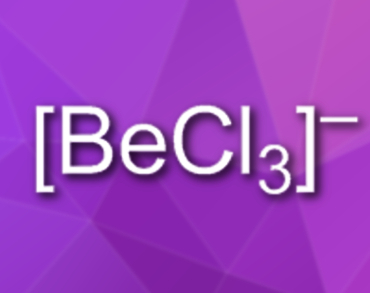Beryllium is the lightest alkaline earth metal and very toxic. However, beryllium compounds show high reactivity toward bond activation, which makes them interesting research targets. Beryllium often acts analogously to aluminium, which means it could have promise for some catalytic applications.
Magnus R. Buchner and colleagues, University of Marburg, Germany, have studied the beryllium-induced activation of C−Cl bonds and, in the process, found the trichloroberyllate anion [BeCl3]– for the first time. The team combined BeCl2 and tricyclohexylphosphine (PCy3) in chloroform and found that crystals of [Cy3PCHCl2][BeCl3] formed after several days. During the reaction, BeCl2 activates C−Cl bonds in chloroform, which allows for a nucleophilic attack on the carbon atom by the phosphane.
In the discovered [BeCl3]– anion, the beryllium atom is coordinated by three chlorine atoms in a trigonal-planar arrangement. The ion is isoelectronic to the well-known BCl3 and shows Lewis-acidic behavior. It can also act as both a chloride acceptor or donor. According to the researchers, [BeCl3]– is the first example of a stable, tricoordinated beryllium compound without bulky ligands.
- Formation and Properties of the Trichloroberyllate Ion,
Magnus R. Buchner, Nils Spang, Matthias Müller, Stefan S. Rudel,
Inorg. Chem. 2018.
https://doi.org/10.1021/acs.inorgchem.8b01934




